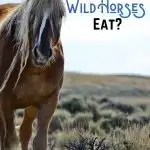America’s wild horses have adapted to surviving on native grasses and shrubs available. We know they eat, but the question is, what do they eat? The answer to that varies depending on the region but can be broken down into three main components.
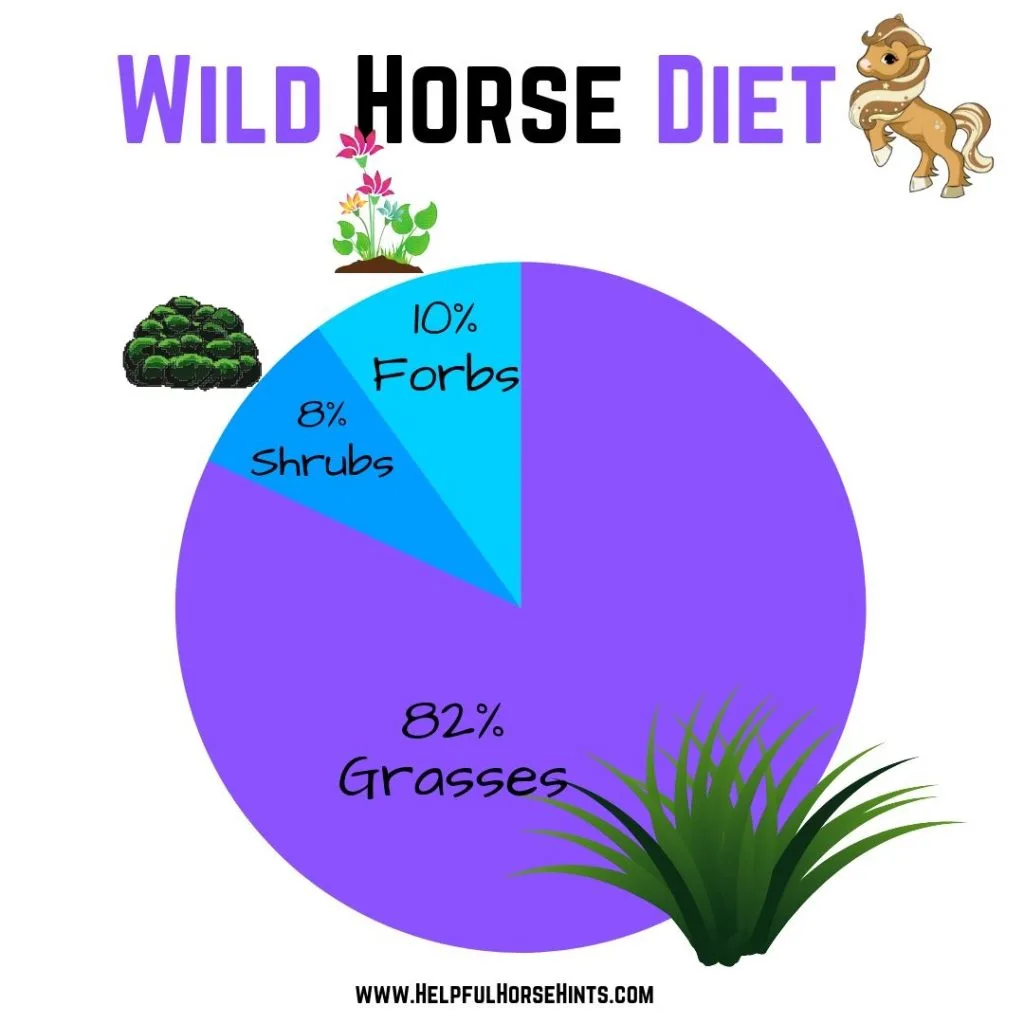
What do wild horses eat? According to a University of Wyoming rangeland study, wild horses eat a combination of grasses, shrubs and forbs. The percentage breakdown for each is:
- 82% Grasses
- 8% Shrubs
- 10% Forbs
I know you may be wondering, what is the difference between a grass, a shrub and a forb? Let’s have a look!
Table of Contents
Grasses
Plants are classified as grasses when they have narrow leaves with parallel veins. On wild rangelands, these grasses may look more like weeds. The fact of the matter is, lawn grass isn’t particularly nutritious and wouldn’t really work as a long term forage for horses. A variety of species of grass are abundant on the rangeland and help to provide nutrition to wild horses.
Let’s have a look at some of the types of grasses you might find where wild horses roam in the United States.
Idaho Fescue Grass
Idaho fescue is one of the most desirable range grasses due to its ability to produce a lot of seed and withstand heavy grazing. It is palatable and nutritious for most grazing speecies including horses and cattle. (source)
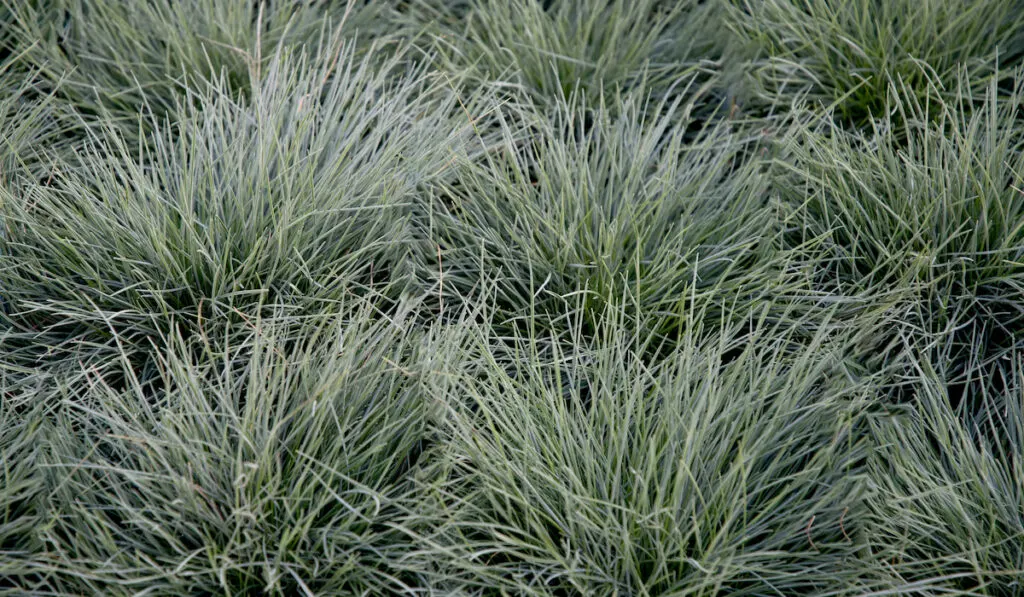
Needle Grass
Needle grass is sometimes also called “Purple Stipa” or “Purple Tussockgrass”. It is a great rangeland grass because of its ability to thrive on disturbed areas and poor soils. It withstands drought and can grow in full sun or partial shade. (source)
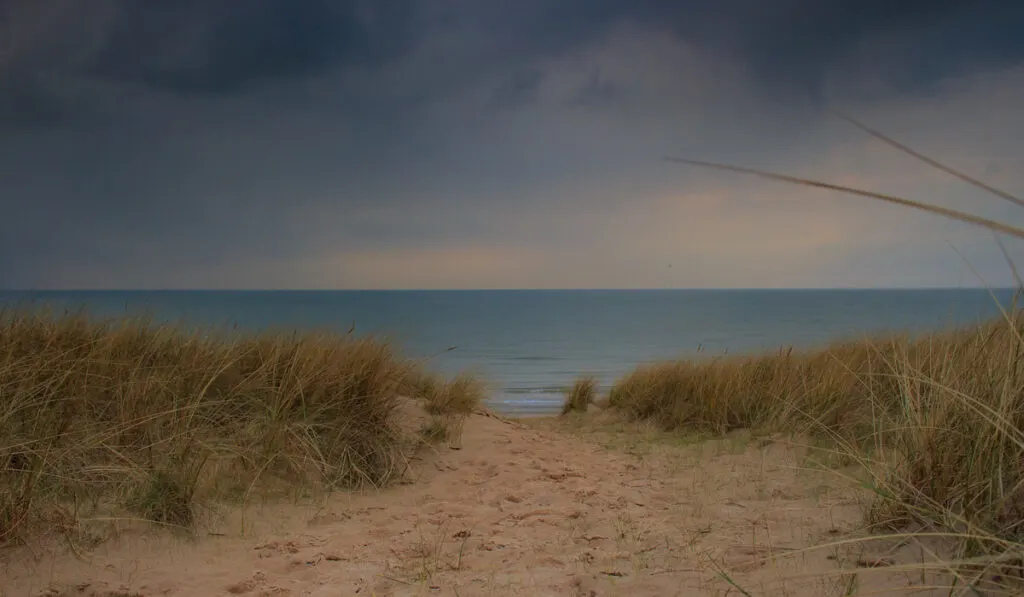
Squirrel Tail Grass
Squirrel tail grass is another great rangeland grass often consumed by wild horses. Pet owners, particularly, might recognize this plant as the “foxtail weed”.
Squirrel tail grass is successful on the range due to its ability to germinate at a wide variety of temperatures and compete with cheatgrass. It is palatable to horses, cattle and sheep in the spring before the seed head, or foxtail, develops.
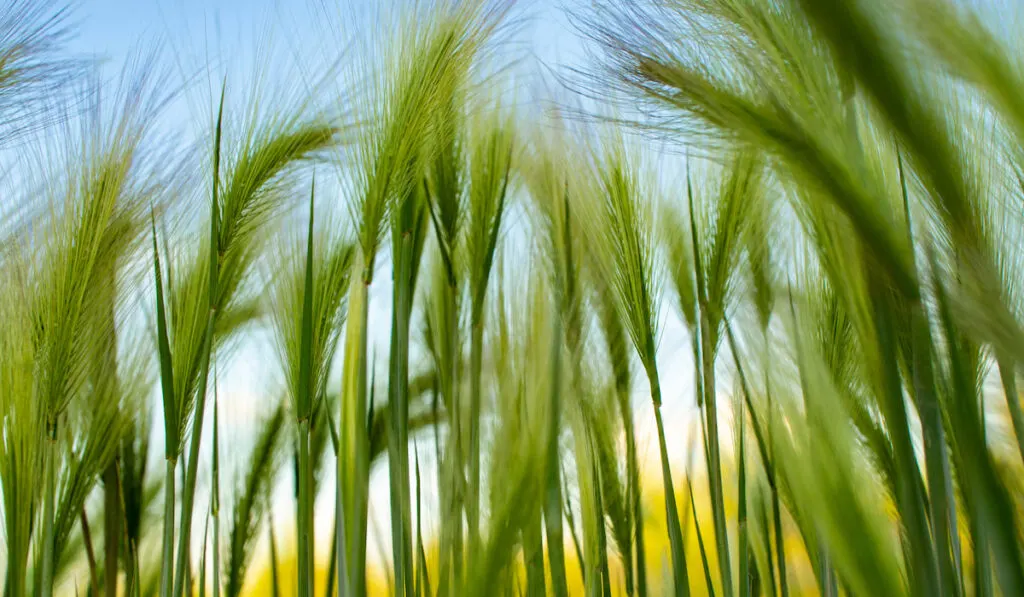
Bluegrass
Bluegrass is one of the rangeland species that actually works pretty well as a lawn grass as well. Most commonly we hear about “Kentucky Bluegrass”. Horses and cattle are very fond of this type of grass as it is highly palatable (very yummy).
Kentucky bluegrass does go dormant in very hot conditions but can survive sever droughts. It’s resistance to heavy use makes it one of the favorite grasses for high traffic situations like baseball fields. (source)
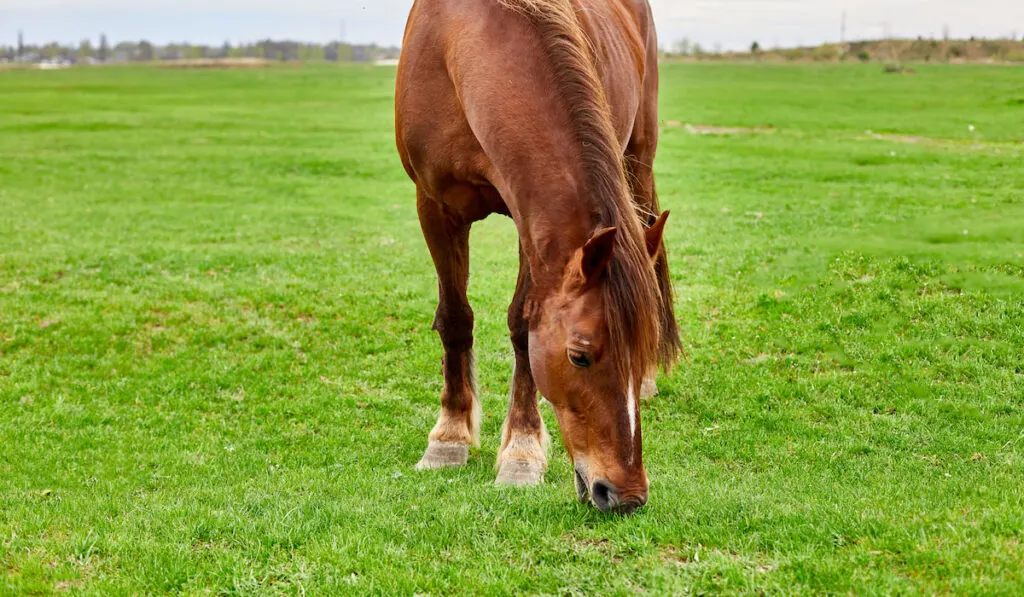
Great Basin Wild Rye
The USDA describes basin wildrye as a large, robust perennial bunchgrass. This grass can reach 6′ in height and 3′ in diameter. It is a grass that is native to the great plains.
Basin wildrye is palatable to all types of grazing animals and wildlife including horses, burros and cattle.
Shrubs
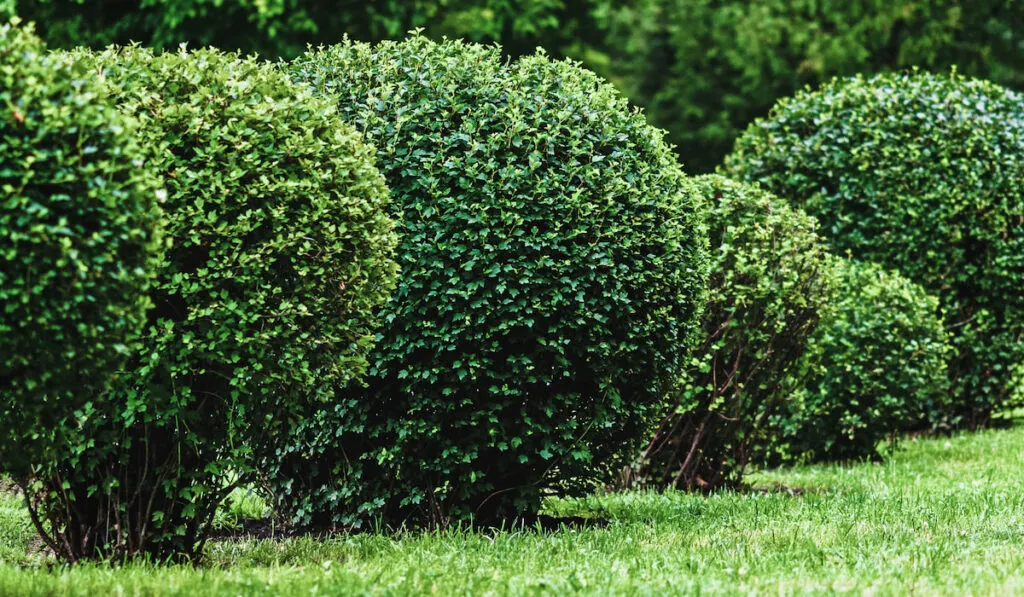
Most horses are going to prefer to eat grasses whenever possible. Forbs are the next favorite and shrubs seem to be last on the list of preferred foods. If you think about the difference between grasses and shrubs, it makes a lot of sense.
Shrubs are pretty easy to spot on a wild horse range. If it looks like a bush (big or small) it is probably a shrub. They are woody plants with multiple stems that are typically low to the ground. Though, in some areas, shrubs can be over 6′ tall.
Which would you prefer to chew on: a nice, soft patch of grass or rough, woody shrubs? I think we know why horses prefer grass. When they need to, however, they can eat shrubs. Some of the common shrubs available for wild horses to eat include:
Big and Low Sage
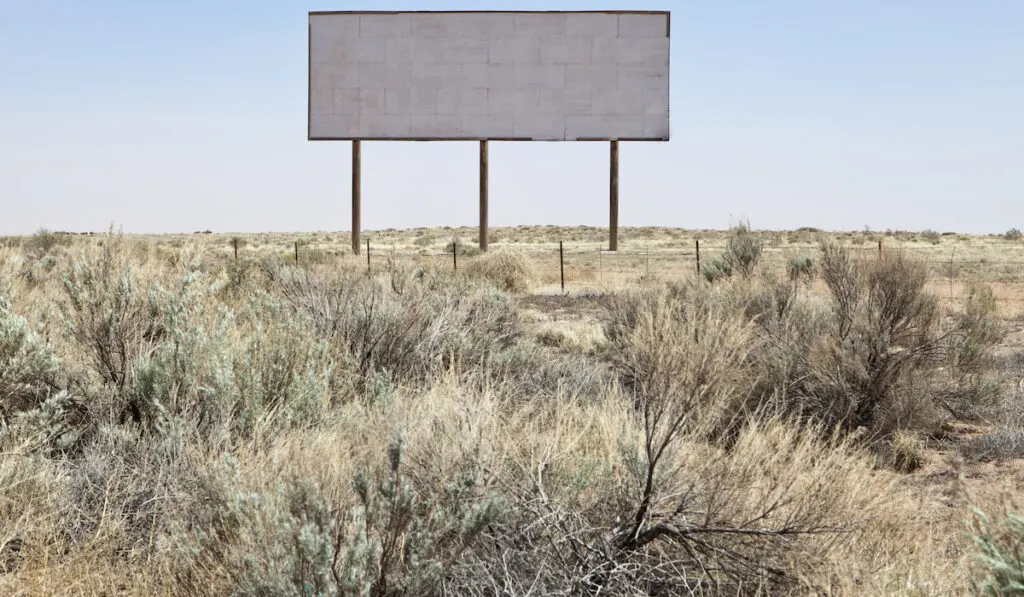
There are a wide variety of subspecies of sagebrush but they all have generally the same look. They typically grow between 2 and 4 foot tall in vast communities. Some, however, can reach over ten feet tall if the right conditions are present.
Sagebrush does well on the open range because of its ability to grow in hot, dry summers as well as in areas with strong winds. While this shrub is not as palatable as grasses, it can be consumed when food is scarce. (source)
Bitterbrush
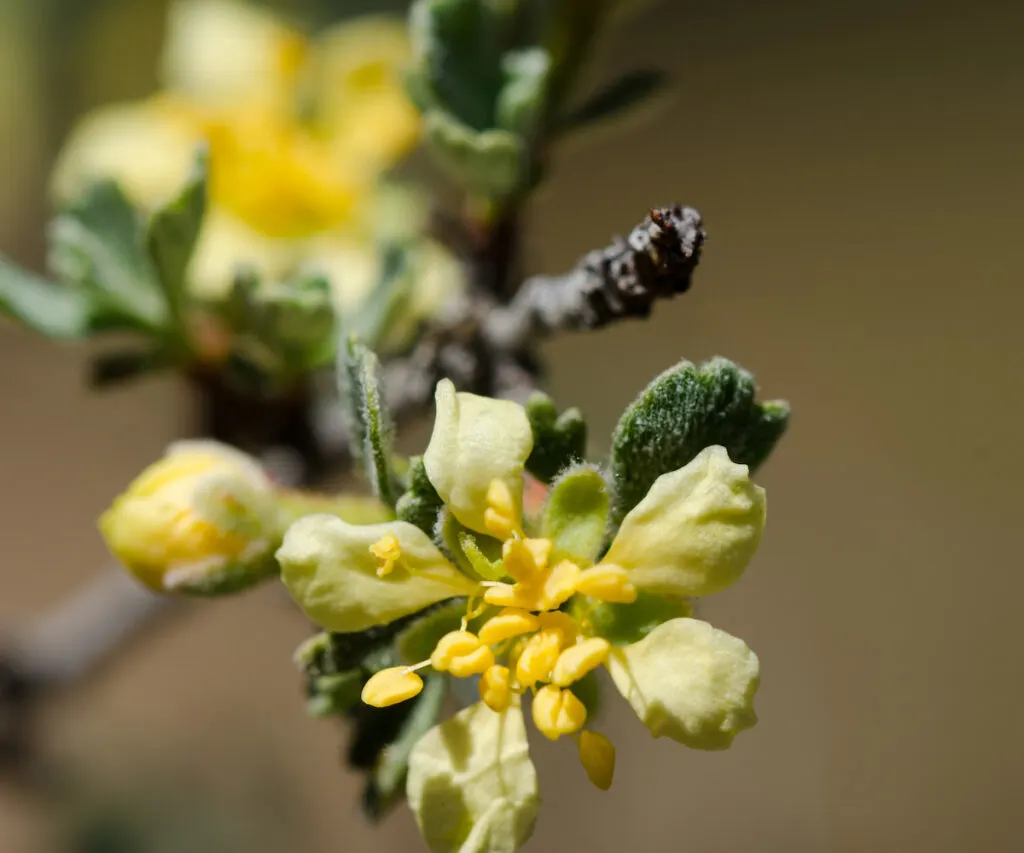
This shrub is native to the western United States where wild mustangs typically roam. It is a plant that is well adapted to desert life and very hardy. It can be identified by its small yellow flowers when in bloom.
Fun Fact: The bitterbrush is a member of the rose family!
Juniper
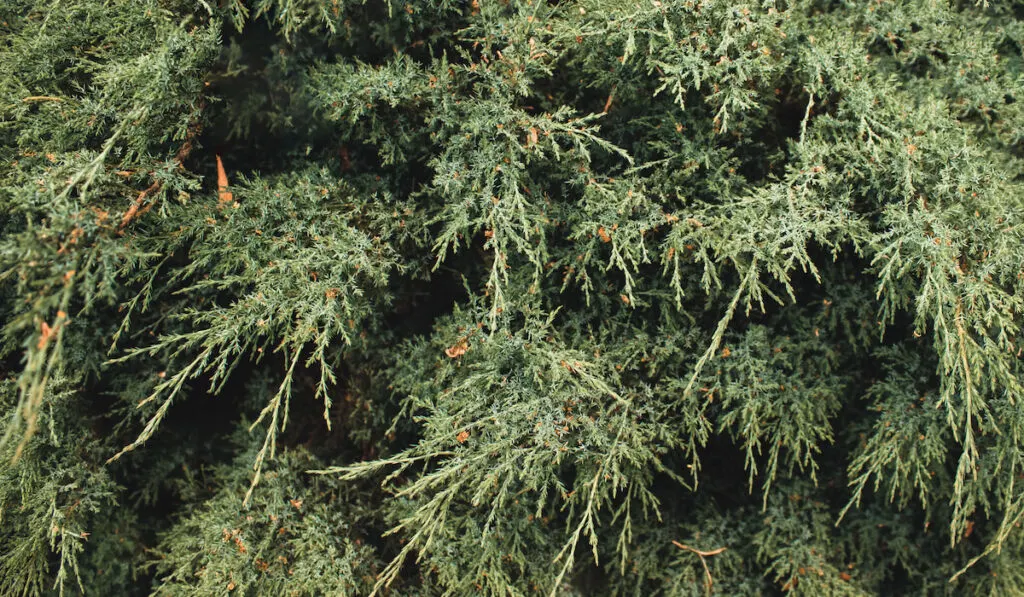
Juniper is an interesting species when it comes to rangeland management. In some areas, like California, it is a native shrub. In some areas though, like parts of Oregon, it is considered an invasive shrub and actually cut back as part of rangeland management strategies. (source)
Greasewood
Greasewood is a thorny shrub with succulent like leaves. It can be anywhere from 3 to 7 feet tall and is used as a nutrition source by wildlife such as pronghorns and prarie dogs. (source)
Saltbrush
Saltbrush is a member of the goosefoot family of shrubs and is common to the great plains and southwest desert.
Fun Fact: Saltbrush was often used by Native Americans to make yellow dyes and the seeds of the plant were used to make flour.
Forbs
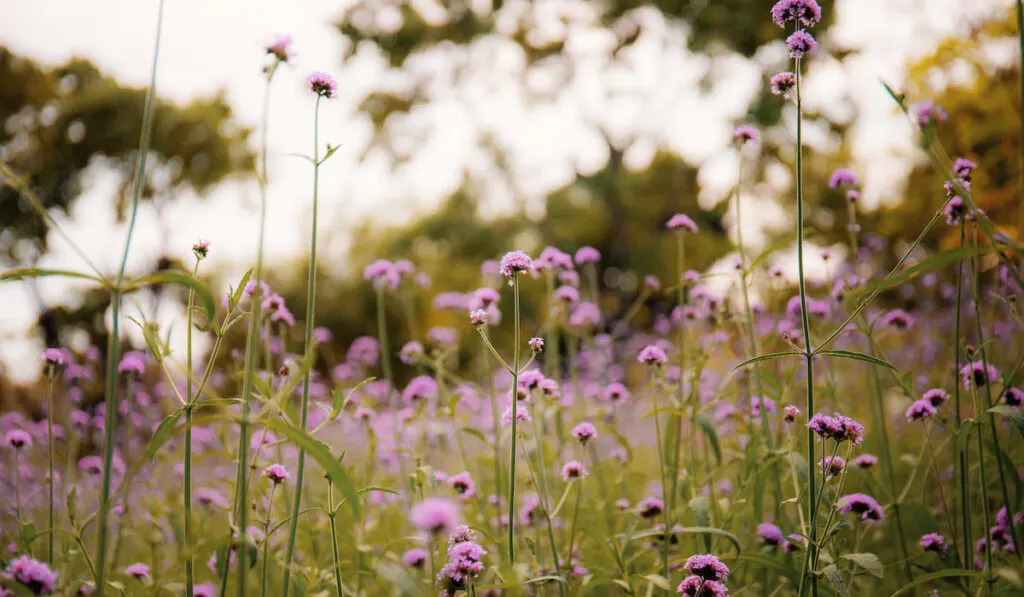
It is quite possible you have never heard the word “Forb” before, and certainly not in relation to horse food.
Forbs are plants that commonly have pretty flowers and net-like veins on their leaves. Think about looking over a beautiful prairie full of grasses and wild flowers. Many of those wild flowers are probably forbs. Research has shown that a wild horses diet will typically contain around 10% forbs.
Some examples of forbs that grow on the range where wild mustangs roam include:
Scarlet Globemallow
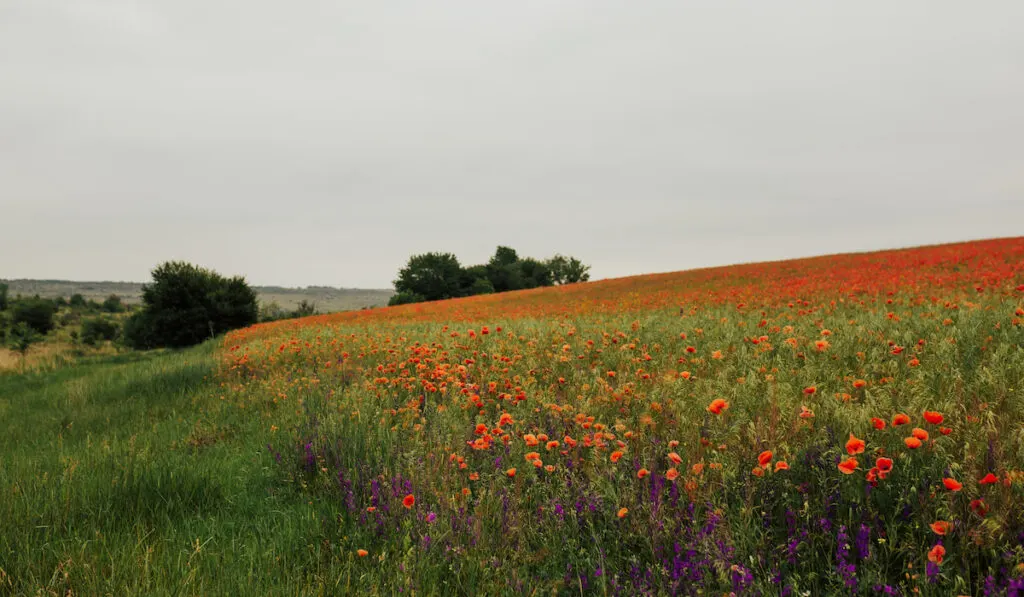
This beautiful perennial is native to the Great Plains and western United States. It is one of many forbs that can often be found where wild horses roam. This particular variety is also a popular drought tolerant plant for home landscape design.
Indian Paintbrush
Another beautiful forb, there are different varieties which can be found throughout the United States. The most common varieties make their home in the eastern states. Different species of Indian Paintbrush may also be referred to as clovers. (source)
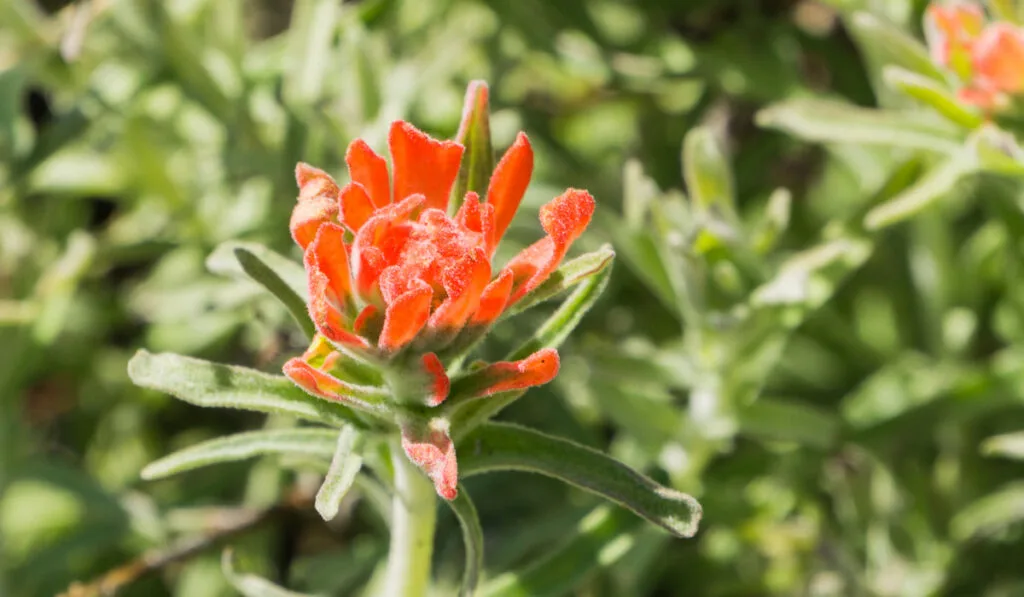
Area Specific Wild Horse Diets
Let’s look at some of the common regions where wild horses roam and the grasses and shrubs available for them to eat in those locations.
Please note that this list is by no means comprehensive. In fact, it should be considered just a small sampling of what may be available in each state. The plants listed below were what I was able to ascertain from the BLM website but they rarely list the grasses for each HMA.
More information can be found on the BLM website.
Wild Horse Diets in Arizona
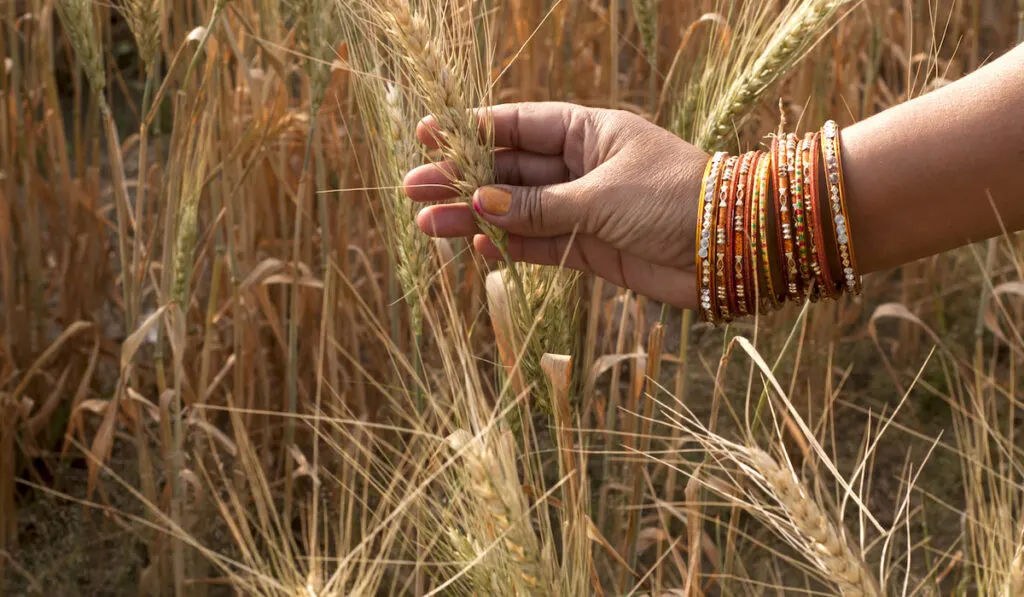
Arizona may seem like one giant desert but it does actually have various types of ecosystems depending on the area. According to the BLM, wild mustangs in Arizona could browse on:
- Indian Wheat
- Various Summer and Winter forbs
Wild Horse Diets in California
There are several herd management areas (HMA’s) that have wild mustangs in the state of California. While each range will have it’s own unique mix of vegetation available, we can look at some of the generally available vegetation.
According to the BLM, some of the vegetation available to wild horses in California includes:
- Juniper
- Bitterbrush
- Big and Low Sage
- Bluegrass
- Squirreltail
- Needlegrass
- Idaho Fescue
Wild Horse Diets in Colorado
Colorado’s wild horses typically graze on the following:
- Sagebrush
- Pinion Juniper
- Bunchgrass
- Saltbush
Wild Horse Diets in Idaho
Wild mustangs in Idaho may consume the following:
- Sagebrush
- Threadgrass
- Indian Ricegrass
- Thurber Needlegrass
- Wheatgrass
Wild Horse Diets in Montana-Dakotas
These states are home to the famous Pryor Mountain wild horses. There is a protected refuge for these mustangs and forage can often be limited. Some of the plant species Pryor Mustangs may graze on include:
- Mountain Mahogany Shrub
Wild Horse Diets in Nevada
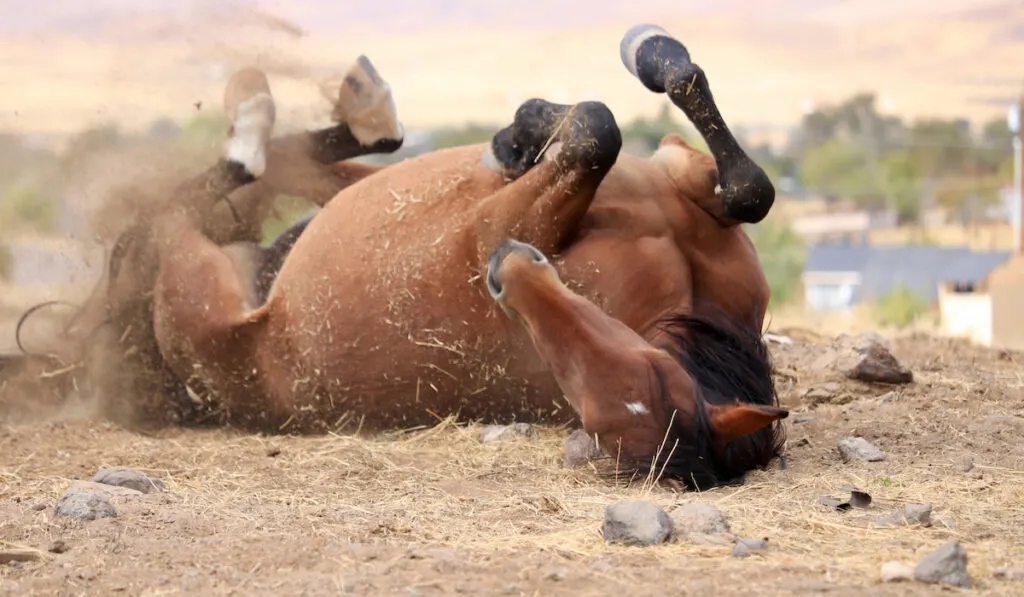
Nevada is home to many different populations of wild mustangs. They can be found throughout most of the state. Wild horses in Nevada might eat any of the following:
- Salt Desert Shrub
- Sagebrush
- Winterfat
- Pinyon Juniper
- Rabbitbrush
- Bluebunch Grass
- Wheat Grass
- Squirreltail
- Needlegrass
- Bottlebrush
- Bitterbrush
- Bluegrass
- Milkvetch (forb)
- Arrowleaf Balsamroot (forb)
- Lupine (forb)
- Phlox (forb)
- Aster (forb)
Wild Horse Diets in New Mexico
New Mexico doesn’t have a lot of wild horses. According to the BLM, the total population is usually around 90 horses for the state. These horses might eat:
- Pinon-Juniper
- Black Grama
- New Mexico Feather Grass
- Blue Grama
- Galleta
- Bottlebrush
- Squirreltail
- Indian Ricegrass
- Mountain Mahogany
- Sand Dropseed
- Cholla
Wild Horse Diets in Oregon and Washington
Oregon is most famously known for the South Steens HMA but there are actually quite a few different herd management areas (HMA’s) spread throughout Oregon and Washington. Horses in these areas might consume:
- Sagebrush
- Bunch Grasses
- Cheatgrass
- Medusa Head Rye
- Bluebunch Wheatgrass
- Thurber’s Needle Grass
- Bottlebrush
- Squirreltail
- Sandberg Bluegrass
- Numerous Forbs
Wild Horse Diets in Utah
There are 19 different HMA’s in Utah. The wild horses found in Utah may graze on:
- Sagebrush
- Juniper
- Mountain Fir
- Ricegrass
- Wheat Grass
- Blue Grass
- Squirrel Tail
- Salt Desert Shrub
Wild Horse Diets in Wyoming
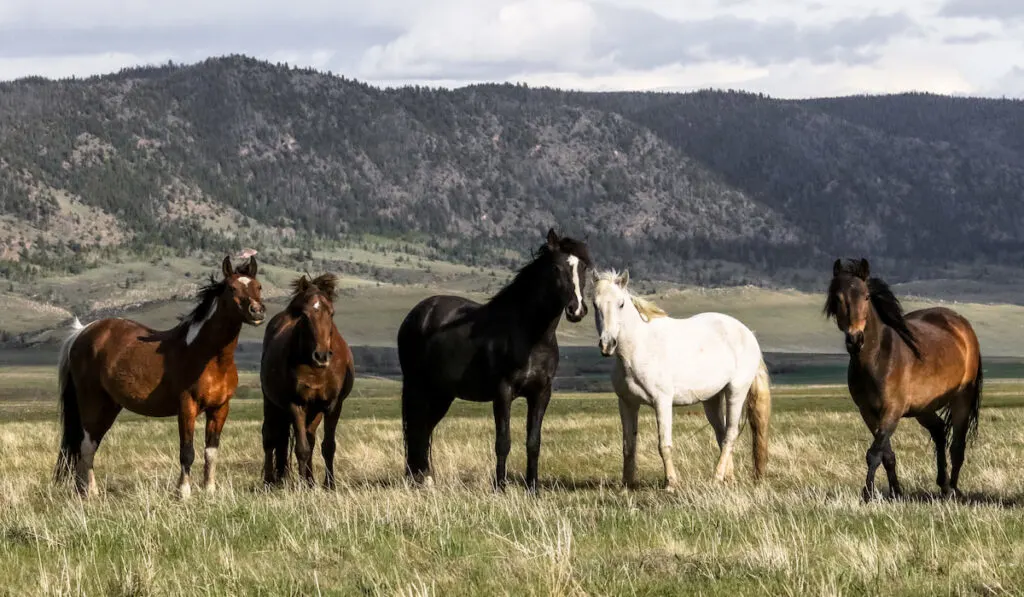
Wyoming is home to 16 different wild horse HMA’s. The wild horses in Wyoming can often choose from the following foods:
- Sagebrush
- Greasewood
- Saltbrush
- Juniper
- Indian Rice Grass
- Wheat Grass
- Sedges
- Needlegrass
Related Questions
How do researchers determine what horses eat in the wild? Most studies rely on fecal analysis to determine what the horses have been meeting. Basically, this information was brought to you by dedicated researchers who analyzed lots and lots of horse poop.
What do wild horses drink? Each wild horse rangeland has water sources available for the animals that live there. In severe drought conditions, mustangs may have to travel miles each day to find water. In some areas, the BLM has installed equipment to catch rainwater and provide supplemental water.
What kind of meat do wild horses eat? While horses have been observed eating meat, it is not a staple of their diet. On rare occasions, wild horses may sample or even consume dead animals if they come across them.
What do wild horses eat in the winter? While grasses are the preferred forage for horses, in the winter, horses may have to resort to eating shrubs for the major portion of their diet.
Is it illegal to feed wild horses? It is illegal to feed wild horses and burros. If you see a wild horse or burro in need of assistance, contact the BLM and they can take appropriate action.
Do horses eat their babies? No, horses do not eat their babies.
If you would like to learn more about mustangs, check out these other helpful articles:
- Mustang Horse Color Guide (with Pictures)
- 7 FAQ’s About Selling A BLM Mustang
- Decoding a BLM Mustang Brand
- Best Mustang Training Books
Resources
http://www.uwyo.edu/esm/faculty-and-staff/scasta/pdfs/b-1260.pdf
https://www.fs.fed.us/wildflowers/plant-of-the-week/purshia_tridentata.shtml
https://www.fs.fed.us/wildflowers/plant-of-the-week/atriplex_canescens.shtml

